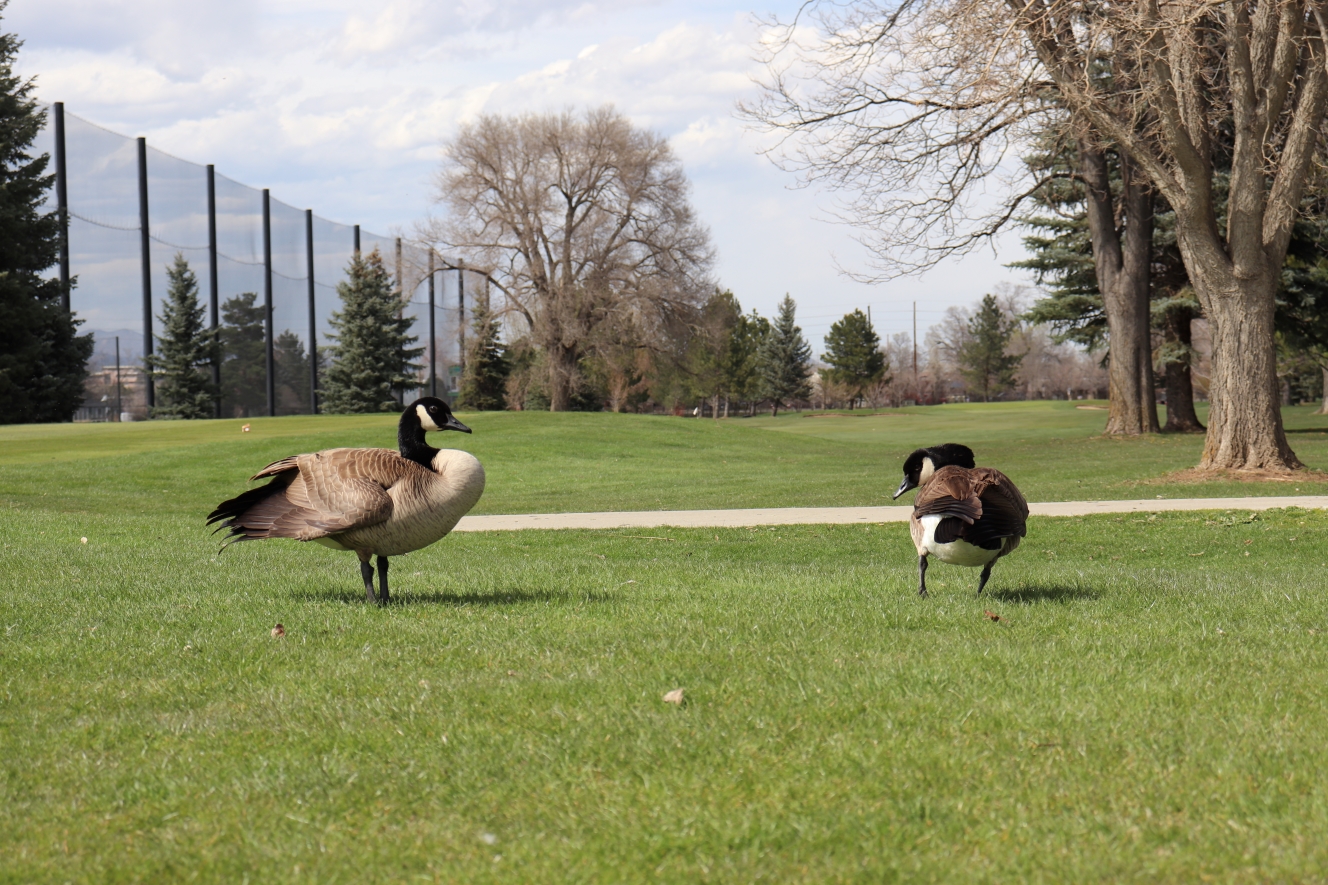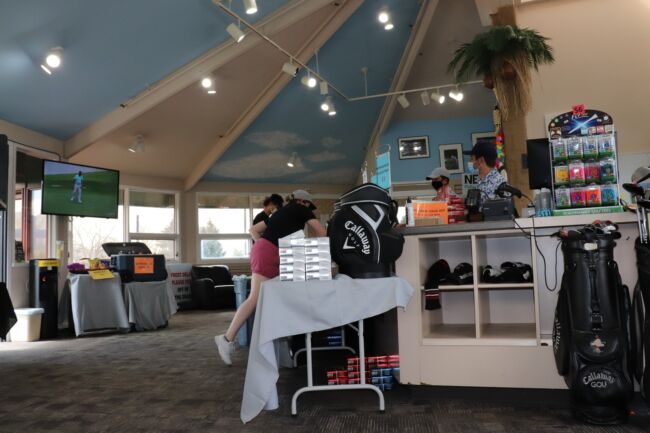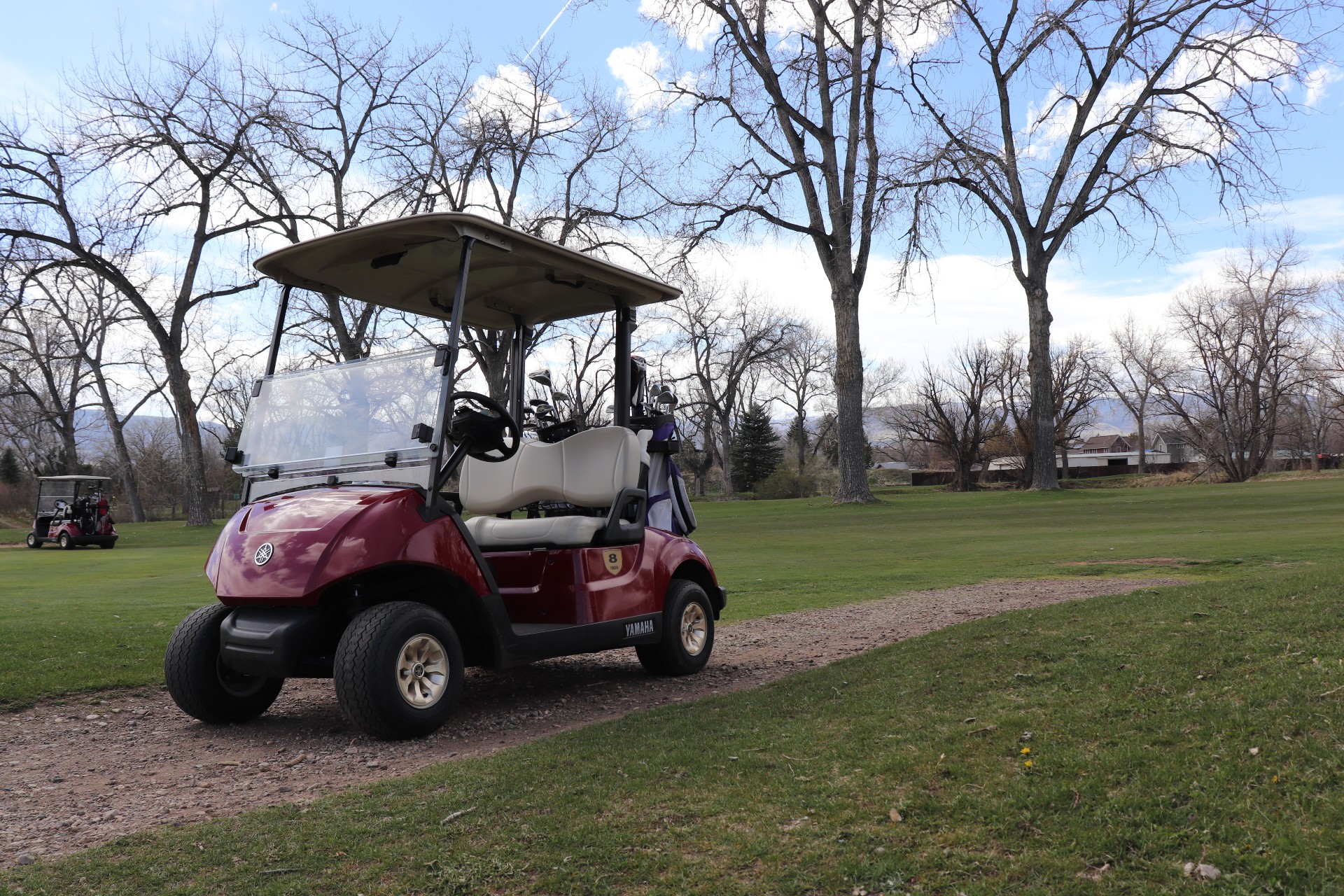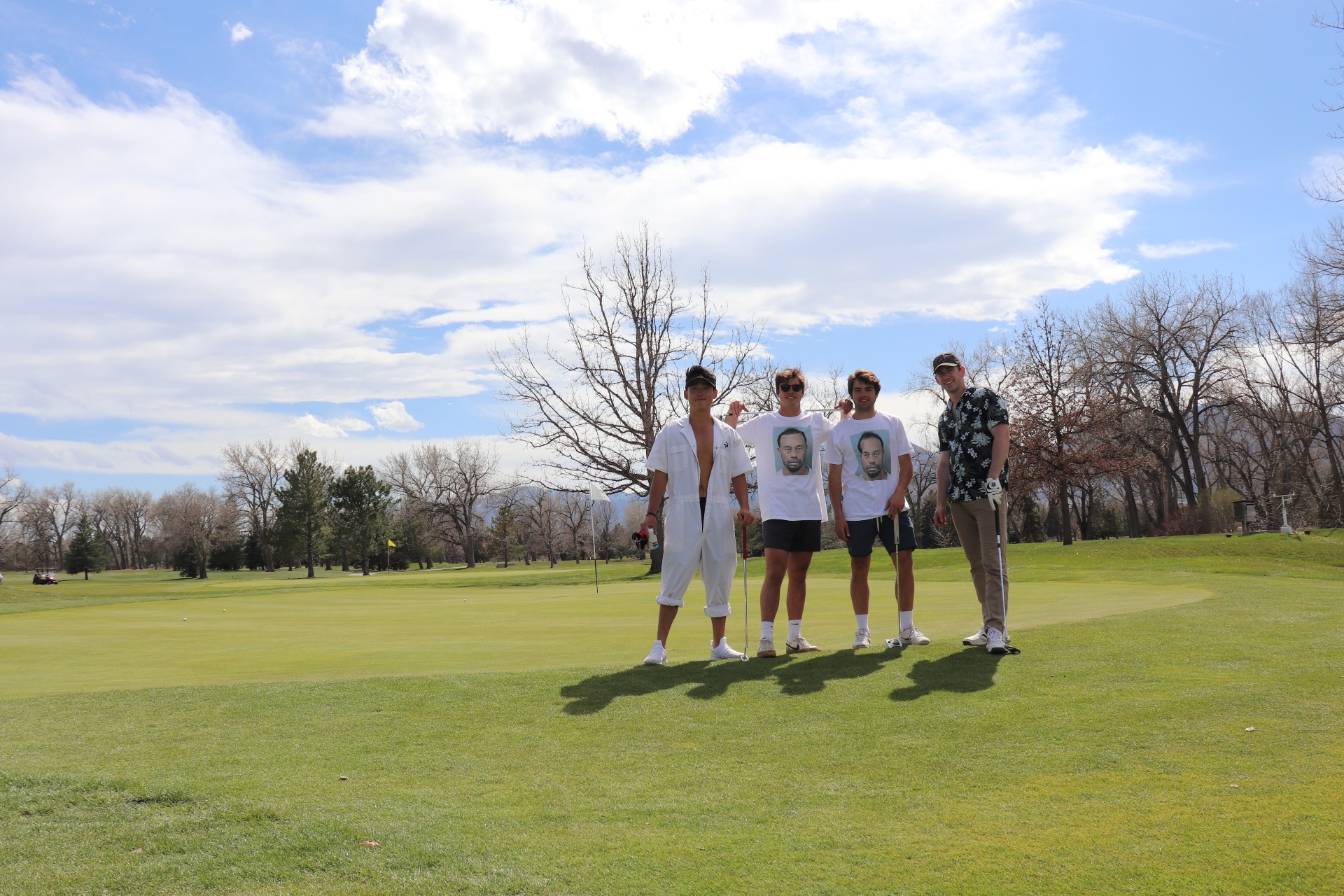
Quarantine Golfers: The Game Saved Them and They Saved the Game
The COVID-19 pandemic introduced 570,000 new golfers to the game this past year. In a way, the pandemic saved the industry.
My newfound infatuation with the game of golf began in the summer of 2020 at the first large surge of the COVID-19 pandemic. You could call me a “quarantine golfer,” or a “COVID golfer,” and that label does tell you the time I started playing golf but it doesn’t tell you why. For months, I had been confined in my home, recycling stale air into my lungs and wishing that I could go outside. I needed to smile and laugh with my family again. My muscles and bones begged me to get moving. I craved something new, energizing and challenging. I was not alone in this pursuit of happiness, since there were over 570,000 beginner golfers throughout the span of 2020 according to a recent industry update.
My dad and grandpa have been playing golf together for as long as I can remember. I can vividly recall many conversations that my dad and I would have after he got home from a round. He would always tell me what his score was, announce my grandpa’s score if he won, but would whisper it if he had lost. After the details of his performance, he would explain the beauty that the course had to offer and how the weather accompanied it. He would talk about the funny moments, which would typically be my grandpa digging himself out of a bunker or his haphazard golf cart driving. My dad’s stories made me think that I would enjoy my time golfing and the pandemic gave me the sense that I needed to give it a real shot. But, I felt that I had to prepare before I could go out with them. I asked my dad if I could take his old set of clubs, which was a mixed bag of 1996 TaylorMade Burner irons and putter, a newer TaylorMade driver and a Strata sand wedge. He smiled when handing them over.
Now that I had my own set of clubs, I could go practice. I would go to the driving range and practice green at least three times a week to try to get to the point where I wouldn’t completely embarrass my dad and grandpa when I went out with them on the course. When I wasn’t at the range, I was at home watching YouTube videos that taught me how to play the game. Naturally, I had an awful slice, one of the worst misses you can have in golf. It needed to be taken care of, so I looked to people like Rick Shiels for tips to straighten my flight path. I would take notes, go back to the range and fix my inconsistencies. Then I would find another problem with my game, head to YouTube, then back to the range; rinse and repeat for a few weeks. I also watched Random Golf Club Films, which ultimately welcomed me to play the game.

Once I had enough courage to ask my dad if I could play with him, he took me over to a little par 3 course called Valley Hi in Colorado Springs. If you looked at the scorecard after that day, you would think that I had a terrible time. I wasn’t even close to making par on a single hole. I raked up double, triple, quadruple and even had a few quintuple bogeys. If you don’t play golf, just know that is not good. Basically, on every hole where I was supposed to hit it in the cup by three shots, I was typically finishing the hole by writing a 6, 7 or 8 on my scorecard. That day I learned golf is hard… really hard.
I also realized that it really didn’t matter what my score was on the golf course. I found that golf remedied the medley of problems I had during the pandemic. I got to breathe fresh air again. Freshly cut grass, lush vegetation and sap from the trees invigorated my sense of smell. Bright sunshine brought color back to my pale skin. Most importantly, I found that golf allowed me to spend more time with my family and have fun with them.
My first true game of golf happened a week after the par three. My grandpa joined my dad and me for a round at the 18-hole course at Valley Hi. I got to see for myself the funny stories that dad had told me after his golf rounds of the past. I will never forget watching my grandpa attempt to get his little white ball out of a sand trap. He struck the sand three times while cursing under his breath before making it on the green. Dad and I smiled at each other while we sat on the golf cart and quietly laughed. I remember hitting a couple of good shots that day and was pleased with my performance although I ended my day hitting the ball 127 times on a par 72 course. That day, I didn’t think about anything but the game of golf. The COVID-19 pandemic had been adding to my regular stressors and anxiety. But, nothing even came close to entering my mind while I was there. I was living in the moment and I wanted more.

Nearly every week for the rest of the summer, my dad, grandpa and I went out on the course. My game started to improve and I found myself enjoying playing that much more. We would travel to different courses and I would get to experience new challenges. The game tested me in ways that I didn’t think it would. It taught me how to make conversation with complete strangers; it taught me to stay positive when I hit a terrible shot; it taught me to enjoy the process of getting better at something new and much more. The game of golf is exactly what I needed during the pandemic. I knew that there were many more beginner golfers who started playing pandemic because I had met them on the course and the workers at these courses have raved about the influx of newcomers to the game.
Interested in learning more about this phenomenon, I drove over to Flatirons Golf Course, a place that I call home to see if any of the workers had any comments about this wave of new players. I was greeted by Josh Prrest, who was standing behind the counter ready to check me in for a tee time or ring me up for a bucket of range balls. I asked for a medium bucket, but wanted to know what he had heard from the quarantine golfers while he had been working at Flatirons. I gave him a rundown of my experience and he said that it echoed many others.
“That’s a similar story with most people this season. They’re all like ‘I found golf pretty interesting but never really gave it a shot, but since COVID rolled around there’s nothing better to do,’” Prrest said, reflecting on the newcomers to the game in 2020. “Now they’re all addicted.”

I grabbed my receipt for the range balls but Prrest also handed me a sticky note with the contact information for someone that I needed to talk to for this story. I thanked him for the conversation and the tip for who I should talk to next. I hit my golf balls while the sun was setting and it was gorgeous, but I was ultimately wondering who was on the sticky note that Prrest gave me. I drove home and did some research as to who I was about to email: PGA Director of Golf at Flatiorns, Tom Buzbee.
After emails back and forth, Buzbee invited me to come down to the course on one of the most celebrated days in golf, Masters Sunday. I graciously accepted. Earlier that day I had brunch at my friend’s house and we watched Hideki Matsuyama write his name in the history books as the first Asian-born man to win the prestigious tournament. It was incredible to watch his round unfold. As much as I wanted to watch every second of his incredible performance, I needed to head back to my home course.
I stepped into the same clubhouse from a few days prior and was greeted by three wonderful staff members. I let them know that I had set up an appointment to meet with Tom Buzbee, to chat about this story. They let me know that I was in for a treat and that he was at the first tee box greeting golfers who were about to begin their rounds. One of them walked me down there and we chatted about the weather. The sky was clear, the sun was bright, and the wind was cool; a perfect day for golf. I thanked her for being so helpful and for the introduction with Buzbee.
He and I exchanged a light fistbump, then he hopped in the golf cart and patted the passenger seat for me to join him. Although he was wearing a mask, I could still tell that he was happy to talk golf with me. His grey eyebrows perked up when I told him what the story was about. I only asked two or three questions while we roamed in the golf cart during our 45 minute conversation. He ran the show and had some incredible things to say about the game. As a quarantine golfer, it was easy to recognize that golf was exactly what I needed during this pandemic. It made me feel alive again. What I didn’t realize was that the golf industry needed this wave of new golfers to stay alive.
From our cart we watched golfers of various ages and skill levels hit off the first tee box and Buzbee not only told me about his own incredible history with golf, but the history of the game itself. It truly is a roller coaster ride in terms of public perception. Golf was incredibly exclusive and courses were mostly private in the 1940s and 50s. But when Arnold Palmer went on his incredible Masters winning streak throughout the 60s, he broke the royalty stigma in golf. Public courses rose from that achievement, public perception changed and people loved golf for the next two decades. Buzbee continued to seer us around the back of the tee box and explained when and how the golf industry blew it.

“In the 1990s, we opened a golf course every day in America. There were years [that] we opened 400 golf courses a year in America. We were cranking them out and had these player development programs. We were teaching everybody grip stance and swing… we thought we were geniuses,” Buzbee said. He stopped the golf cart and turned to me, “We messed up with a couple of things. We kept building harder courses, more expensive courses, longer courses [and] fancier courses. The game of golf was already kind of hard. We made it even harder.”
Because of that boom, the public perception changed again. People weren’t willing to pay for a game that they couldn’t even play. It also became a game where most people didn’t feel welcome. Although Tiger Woods had a massive effect on the increase in the game’s interest during the early 2000s, it began to die off and remain stagnant in the 2010s because it was still too expensive, difficult and unwelcoming for the average person.
“We were at a loss as recently as three years ago, four years ago [and] five years ago. Golf was stale; it was stagnant. We were losing as many golfers each year as we were introducing to the game,” exclaimed Buzbee. “We’re talking millions, we’re talking two million people. There’s about 18 million people that call themselves golfers in America. Pretty good participation but we weren’t growing it.”
I was one of those golfers. The first round that I truly ever played was a little par three course with my dad and my grandpa about four years ago. I enjoyed the round, but ultimately didn’t feel welcome playing golf. I thought I would never play again, it just didn’t captivate me then.
“It’s embarrassing but the virus is the best thing that ever happened to golf in America,” said Buzbee, while panning his hand across the fully-booked course.
Buzbee then explained the importance of keeping this new wave of golfers happy. He was ultimately hired at Flatirons because he truly knows how important it is to make golfers feel welcome and promote fun. He showed me his badge, which didn’t read “Tom Buzbee, Director of Golf,” but “Tom Buzbee, Director of Fun.” He went to the same research institution who told him the numbers about how the game was stagnant before the pandemic. They emphasized the importance of keeping quarantine golfers interested this upcoming season.
“[They said,] ‘you’ve been handed a golden opportunity, once in a lifetime. All of these ‘COVID golfers’ are curious about the game. They’re interested and they want to play,’” Buzbee said. “‘If you blow it, it’s your own fault. If you can’t be nice to people and [don’t] welcome them, they won’t come back.’”
He pointed to a young golfer teeing off with shaggy hair, baggy blue jeans and a graphic long sleeve T-shirt.
“Ten years ago, we wouldn’t let him dress like that. But Noah is one of the best players here. Noah brings his friends and he is growing the game. That generation has to be allowed to dress differently than our generation,” Buzbee said.
Right after the group of young men had hit the first shots of their round, another cart pulled up to the first tee box. There was a young man with an athletic build; clearly an experienced golfer. His clubs sat behind his seat and he looked ready to tee off. His girlfriend accompanied him and she looked shy and timid. She didn’t have clubs in the cart and was just planning on taking a ride. Buzbee wasn’t going to let that happen. He whipped our cart around the first tee box.
“Where’s your clubs?” Buzbee asked her, stopping our cart in front of the couple.
“I did not bring my clubs today,” she said, letting out a nervous laugh. Her cheeks were flushed.
“Put the green set on her cart,” Buzbee said, asking the starter who was directing the pace of play to give her a bag of rental clubs.
“What?” she said in shock.
“You don’t want to just ride around with him. That’s no fun!” Buzbee exclaimed while pointing to her boyfriend.
“Oh my gosh, thank you!” She said with excitement.
“How proficient are you in the golf world?” Buzbee asked.
“I’ve golfed maybe ten times,” she said.
“Hit from wherever you’re comfortable. If you don’t want to play a hole, that’s okay! If you want to play up farther, that’s okay too. Take as much or as little of the golf course as you want,” Buzbee said with a smile under his mask.
“Thank you so much!” she responded.
“That’s why they don’t let me be the starter because I slow-up play a lot. I won’t bother you anymore,” said Buzbee, chuckling as he hopped back in our golf cart.
Buzbee and I drove off and told me that moments like that are a perfect example of how to grow the game and make beginners feel like they can participate in golf. The culture of golf is beginning to change again, because it has to. As a beginner golfer in 2020, the game helped me get through quarantine, but now I see the industry perspective. This rush of quarantine golfers saved the industry at a time where things were looking poor. Now, in order for us to keep playing golf and for the game to grow even more, courses have to embrace new and different players with open arms—the game’s livelihood depends on it.


